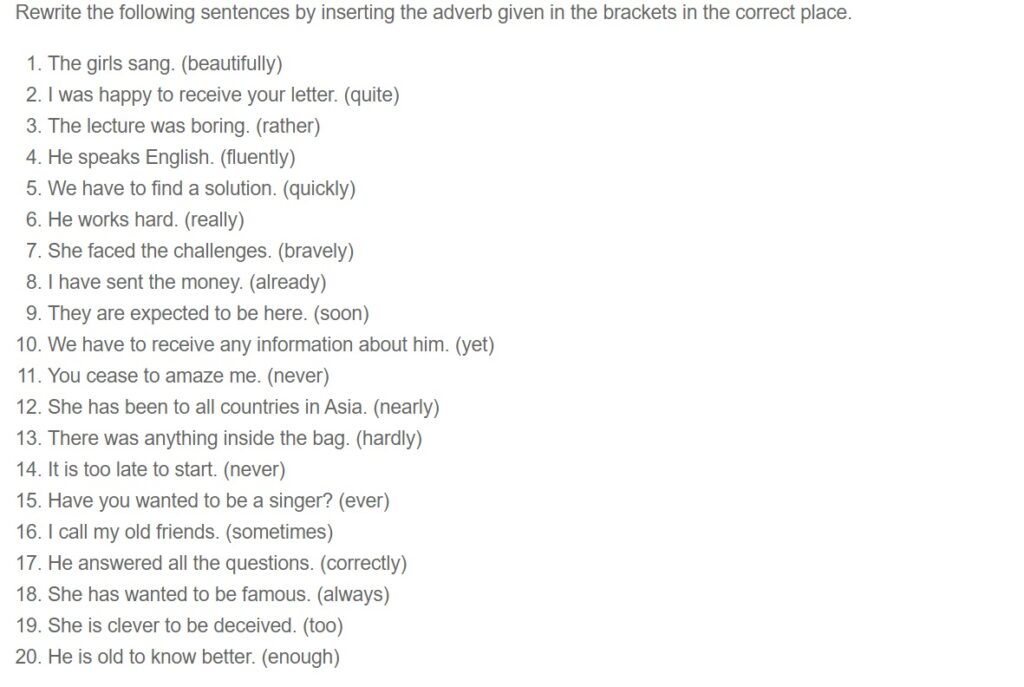Position Of Adverbs Worksheet
Adverbs are words used to modify verbs. Adverbs can go in different places in a sentence. See also: Position of adverbs

Answers
- The girls sang beautifully. (When there is no object, the adverb usually goes immediately after the verb.)
- I was quite happy to receive your letter. (When an adverb modifies an adjective, it goes before that adjective.)
- The lecture was rather boring.
- He speaks English fluently. (Do not put an adverb between a verb and its object.)
- We have to find a solution quickly. / We have to quickly find a solution.
- He works really hard.
- She faced the challenges bravely. / She bravely faced the challenges.
- I have already sent the money. (If there is an auxiliary verb, the adverb tends to go after that auxiliary verb and before the main verb.)
- They are expected to be here soon.
- We have yet to receive any information about him.
- You never cease to amaze me.
- She has been to nearly all countries in Asia.
- There was hardly anything inside the bag. (Adverbs tend to go after auxiliary verbs and before other verbs.)
- It is never too late to start.
- Have you ever wanted to be a singer?
- I sometimes call my old friends.
- He answered all the questions correctly.
- She has always wanted to be famous.
- She is too clever to be deceived.
- He is old enough to know better. (The adverb enough goes after the adjective or adverb modified by it.)